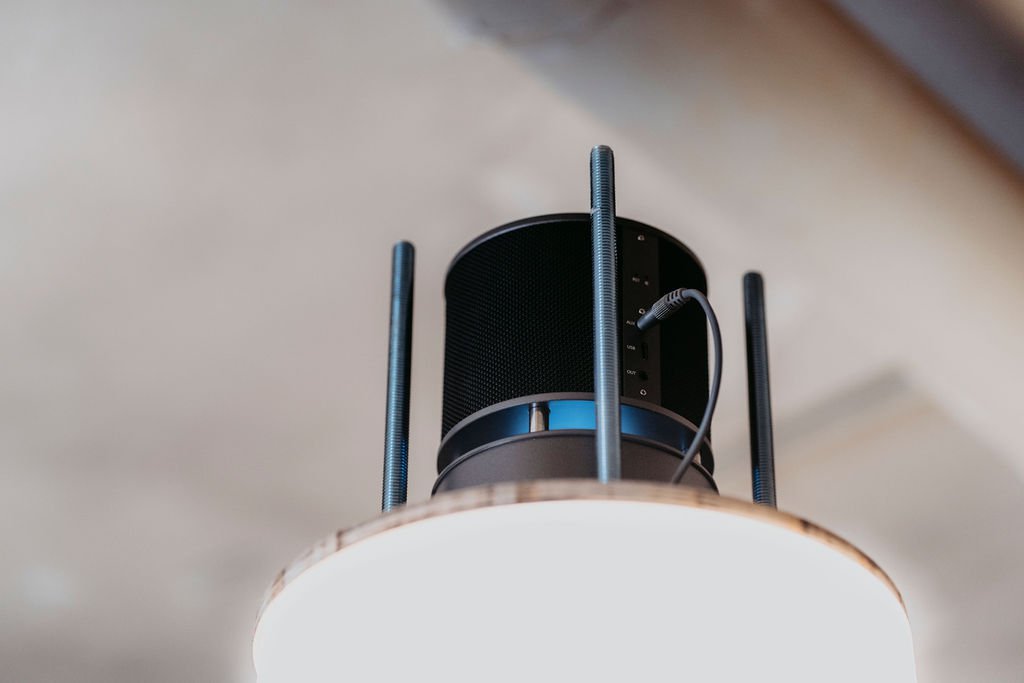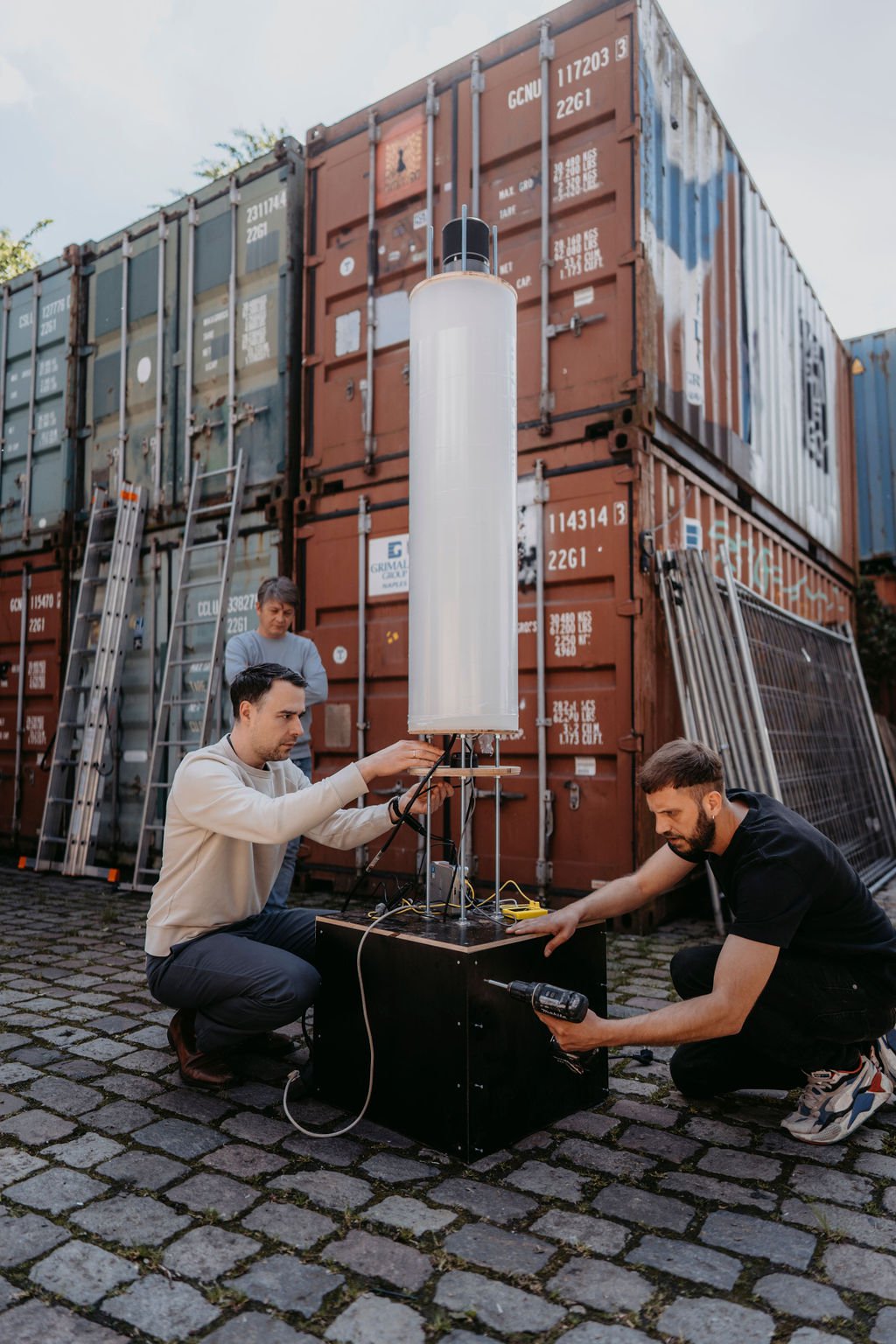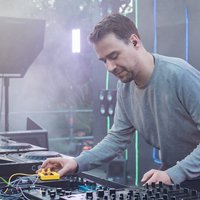»I called the installation ›trias politica‹ – Latin for separation of powers. Fitting for this year’s democracy theme of the festival.«
– Stimming
Beethoven in 360° sound
Immersive sound installation by Stimming
Exactly 75 years ago, with the signing of the Basic Law in Bonn, a constitution came into force that defines the division of state power into legislative, executive and judicial. According to this, the three bodies should control each other and limit the power of the state. Music producer and Beethovenfest Fellow Stimming makes this basic democratic principle tangible with his sound installation »trias politica«.
A sound installation that doesn’t work without togetherness
The installation consists of three pillars (analogous to the three forces) and is equipped with light and 360° loudspeakers. The technology is interactive: the columns use a sensor to detect people within a radius of 10 metres. When a person approaches, the columns react with brightness and sound. The more harmonious the distribution of people to the three pillars, the brighter the light and the clearer the sound. Similar to democracy: it doesn’t work on its own, but together it becomes strong.
»The three pillars can use LiDAR sensors to recognise and react to the position of people around the pillars. These LiDAR sensors are also used in vacuum robots, for example.«
– Programmer Friedrich Seydel
Technical and musical basis
Each column contains a LiDAR sensor that reacts to people in the vicinity and transmits signals directly to a granular synthesiser. In granular synthesis, musical audio recordings are broken down into small grains and can then be manipulated and played back as desired. The sound impression ranges from short pops to a complete audio recording.

The musical basis is a short excerpt from Beethoven’s famous »Missa solmenis«: the prayer for peace »Dona nobis pacem«. Each individual column plays a choir sample. An algorithm, based on the distance measurements of the LiDAR sensors, determines the strength of the division of the sample into individual grains. The closer and more harmonious the audience is to the pillars, the more audible the choir becomes. Only when there is a balanced field of people are all three columns synchronised and allow the music to be heard in its purest form.
About the work
Premiered in 1824, the »Missa solemnis« is one of Ludwig van Beethoven’s most important compositions. He himself described it as one of his »greatest works« – and the mass did indeed become one of the most famous choral works in classical music over the following centuries. The mass consists of five parts and ends with the prayer for peace »Dona nobis pacem« in the final Agnus Dei. It forms the musical basis of the sound installation.
Audio samples and more information about the »Missa solemnis« can be found in our Listening Guide.
The installation invites you to play with sound and light: To change distances, to test with friends and strangers how harmony and disharmony, lightness and darkness can be created together.
The installation is battery-powered and can be experienced at various locations at Beethovenfest 2024 from 19 September.

Stimming concept & direction
Friedrich Seydel, crushed eyes media technical development & production
Kunstlicht Hamburg object construction
Exhibition dates at the festival
More events with Stimming
- , Pantheon Theatre
Stimming & NDR Vokalensemble: The Wild Duck
NDR Vokalensemble, Stimming, Klaas Stok





